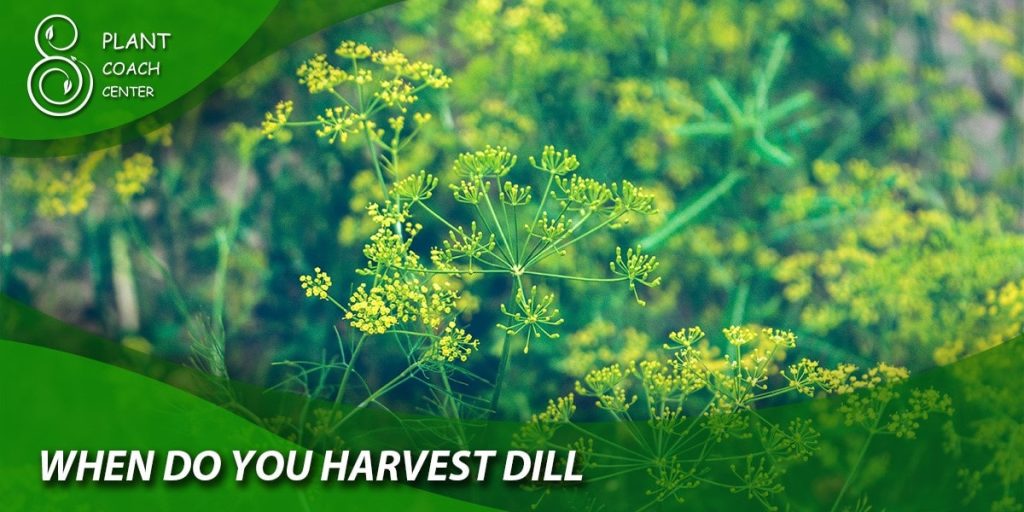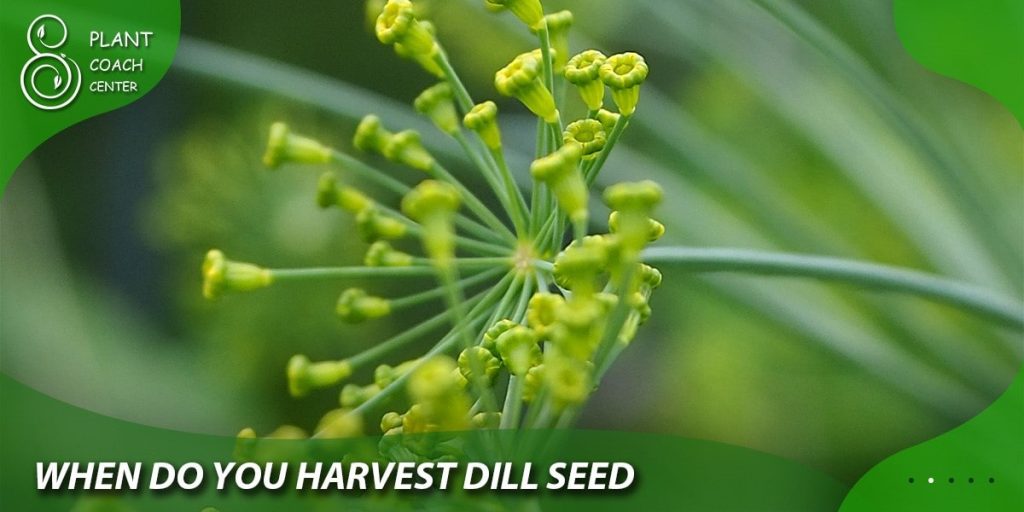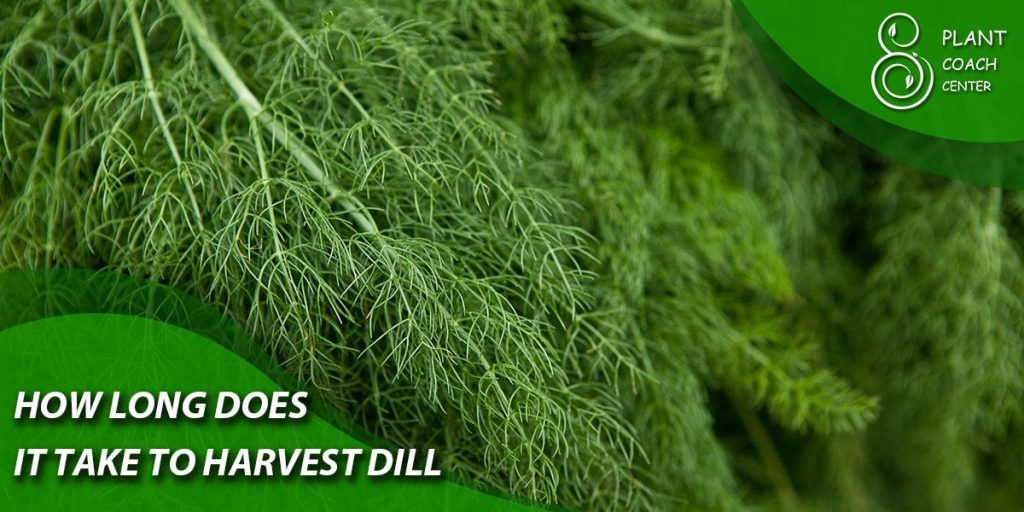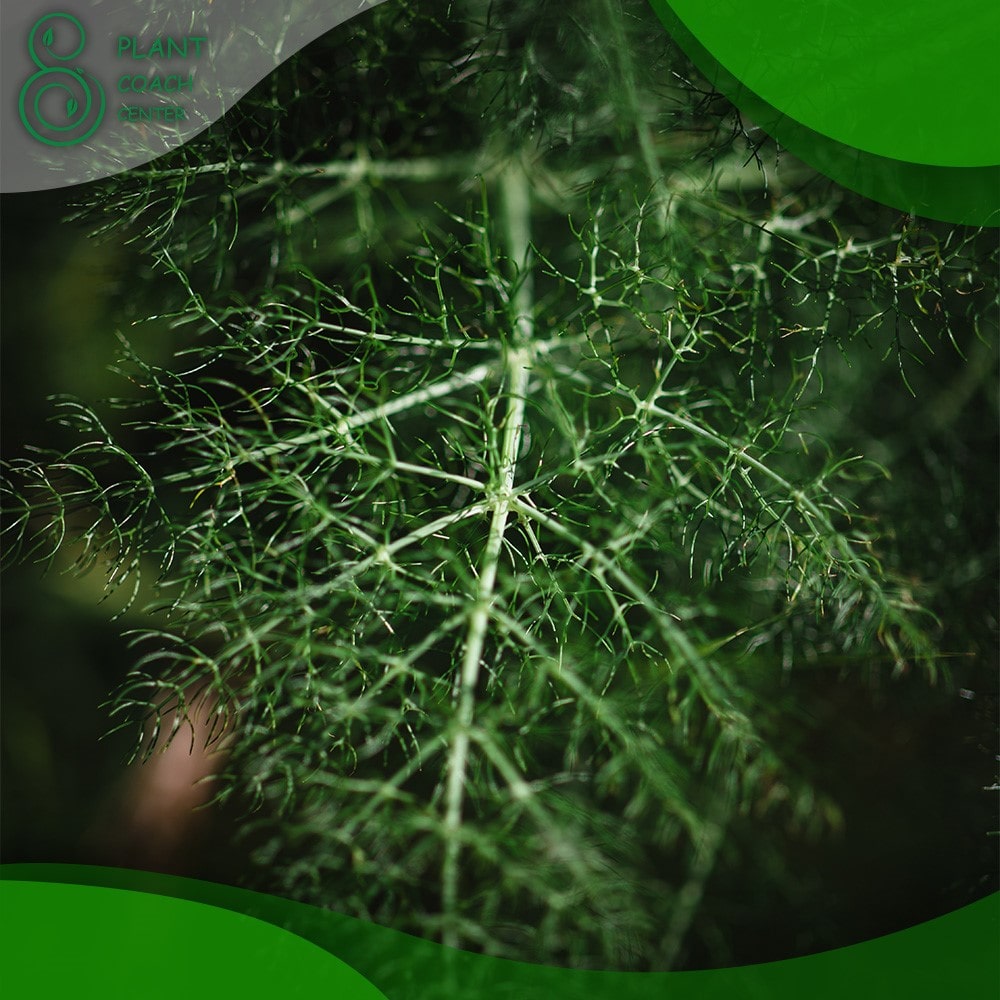When Do You Harvest Dill?
Welcome to the flavorful world of Dill, an aromatic herb known for its delicate feathery leaves and distinctive taste. Whether you’re an experienced gardener or a novice in herbs, understanding the art of dill harvesting is essential to unlocking its true potential. As with any herb, the timing of dill harvest is crucial in determining its flavor, aroma, and overall quality.
This article will delve into the fascinating journey of Dill from seed to mature plant, discovering the opportune moment to snip those lush green fronds. Join us as we explore the various stages of dill growth, learning when to wield our gardening shears for the finest harvest. Along the way, we’ll share expert tips and techniques to ensure you make the most of your dill bounty.

Whether you plan to savor the herb in culinary delights or harness its medicinal benefits, mastering the art of dill harvesting will elevate your gardening skills and add a dash of zest to your dishes. So, let’s embark on this herbal journey and uncover the secrets of perfect dill harvests!
Dilly-Dally No More: The Best Time to Harvest Dill for Maximum Flavor
With its refreshing and tangy flavor, Dill is a versatile herb used in various cuisines and dishes. However, knowing the best time to harvest Dill is paramount to savoring its delectable taste and aroma. The ideal harvesting stage for Dill varies depending on your intended use, whether for fresh consumption, culinary purposes, or preservation.
For those seeking the freshest and most robust flavor, the prime time to harvest Dill is just before the plant flowers. At this stage, usually, around 8 to 10 weeks after sowing, Dill’s essential oils are concentrated in the leaves, giving them the most intense flavor. Harvesting before the flowering stage ensures the herb retains its full zest, making it perfect for adding that distinct dill taste to salads, dips, and sauces.
On the other hand, if your goal is to dry or preserve Dill, it’s best to wait until the flowering stage. The dill plant has reached its maximum height and developed the most extensive leaf growth. Harvesting during this stage provides a substantial yield, which can be air-dried or used for making pickles and other preserved dill products.
Timing is crucial when harvesting Dill, as the flavor profile changes as the plant matures. Waiting too long after flowering can result in a decline in flavor, as the herb begins to focus on seed production rather than essential oil development. So, dilly-dally no more! Understanding the best time to harvest Dill will reward you with a bounty of maximum flavor, enhancing your culinary creations and delighting your taste buds.
From Seed to Snip: Understanding Dill’s Growth Cycle and Ideal Harvesting Stage
Dill, an herbaceous annual, follows a fascinating growth cycle that begins with sowing its tiny seeds and culminates in the delightful act of harvesting its lush green foliage. To make the most of your dill cultivation journey, it’s essential to comprehend the different stages the plant undergoes.
Sowing Dill Seeds
Dill can be grown from seeds directly sown into the soil or started indoors and later transplanted. When planting Dill outdoors, select a sunny spot with well-draining soil. Sow the seeds about 1/4 inch deep and space them 12 to 18 inches apart. Dill is relatively low-maintenance, and germination usually occurs within 7 to 14 days with the right conditions.
Seedling Stage
As the dill seeds sprout and develop into seedlings, they require consistent moisture to establish their root systems. Thinning the seedlings to about 6 inches apart will allow them ample space to grow and access essential nutrients.
Vegetative Growth
The dill plant focuses on leafy growth during this stage. Regular watering, especially during dry spells, promotes vigorous development. Adequate spacing between plants encourages good air circulation and prevents diseases.

Pre-Flowering Stage
This phase is critical for those seeking the freshest dill flavor. As the plant matures and nears its flowering stage, the essential oils responsible for its distinctive taste and aroma intensify in the leaves.
Flowering Stage
When the dill plant reaches its full height, it produces delicate yellow flowers atop its feathery foliage. While this signals the end of leaf growth, it marks the ideal time for harvesting dill if you intend to preserve the seeds or make pickles.
Post-Flowering and Seed Production
If you let your dill plant go to seed, it will produce clusters of tiny green seeds that eventually turn brown. Harvest these seeds when they are fully mature but before they begin to drop naturally to the ground.
The Art of Dill Harvesting: Expert Tips and Techniques for a Bountiful Yield
Harvesting dill is not merely about plucking leaves from a plant; it’s an art that requires finesse and attention to detail to ensure a bountiful yield and the preservation of the herb’s flavorful essence. With these expert tips and techniques, you can elevate your dill harvesting game and enjoy the full potential of this delightful herb:
Selective Snipping
When harvesting dill leaves, opt for selective snipping instead of haphazardly removing foliage. Choose mature, healthy leaves from the outer parts of the plant while leaving the inner ones intact. This encourages the plant to continue producing new growth, extending the harvesting period.
Time it Right
As discussed earlier, timing is crucial for dill harvesting. Harvest just before the plant flowers for the freshest and most vibrant flavor while the essential oils peak in the leaves. Conversely, if you’re after the seeds, wait until the flowers have bloomed and the seed heads have formed.
Use Sharp Shears
To avoid damaging the plant, always use sharp, clean gardening shears when harvesting Dill. Blunt tools can crush delicate stems and leaves, reducing the overall yield and potentially harming the plant.
Harvest in the Morning
For optimal flavor and aroma, it’s best to harvest Dill in the early Morning. At this time, the sun’s warmth helps concentrate the essential oils, ensuring a more potent and aromatic harvest.
Don’t Over-harvest
While gathering as much Dill as possible is tempting, be mindful not to over-harvest from a single plant. Taking too many leaves at once can weaken the plant and impede its future growth. Instead, harvest from several plants, allowing each one to thrive and contribute to your dill supply.
Preserve or Use Fresh
Decide whether you’ll use the harvested Dill fresh or preserve it for later use. If using it fresh, wash the leaves gently before incorporating them into your culinary creations. For safeguarding, consider air-drying the leaves or freezing them in ice cubes for easy use in future dishes.
Preserving the Freshness: How to Properly Store Harvested Dill for Longevity
Congratulations on successfully harvesting your Dill! Now that you have a bounty of this aromatic herb storing it properly to maintain its freshness and flavor for an extended period is crucial. Whether you’ve picked dill leaves for immediate use or collected dill seeds for future seasoning, here are some practical methods for storing Dill to ensure its longevity:
Refrigeration for Fresh Leaves
Refrigeration is the way to go if you plan to use the harvested dill leaves within a few days. First, gently wash the leaves under cold water and pat them dry with a paper towel. Then, wrap the Dill loosely in a slightly damp paper towel to prevent wilting, and place it in a plastic bag with holes for proper airflow. Store the pack in the crisper drawer of your refrigerator, where the temperature is slightly more relaxed and stable.
Air Drying for Dill Leaves
To preserve the flavor of Dill for later use, air drying is an excellent method. Bundle the harvested Dill stems and secure them with a rubber band or twine. Hang the bundles upside down in a warm, well-ventilated area, away from direct sunlight. Within a week or two, the leaves will dry completely. Once dry, gently strip the leaves from the stems and store them in an airtight container in a cool, dark cupboard.
Freezing for Extended Freshness
Freezing is another excellent way to store Dill for extended periods while retaining its freshness and vibrant green color. Start by washing and drying the dill leaves thoroughly. Then, chop the leaves and spread them in a single layer on a baking sheet. Place the sheet in the freezer until the leaves are frozen solid.
Transfer the frozen Dill to airtight, freezer-safe containers or resealable bags. This method allows you to take out only the Dill you need for each use without thawing the entire batch.

Storing Dill Seeds
If you focus on preserving dill seeds, wait for the seed heads to fully mature and turn brown on the plant. Cut the seed heads carefully and place them in a paper bag. Store the pack in a cool, dry place for a week or two, allowing the seeds to fully dry. Once dry, shake the bag gently to release the seeds and collect them in an airtight container. Store the container in a dark cupboard away from heat and moisture.
Beyond Pickles: Innovative Ways to Use Freshly Harvested Dill in Your Culinary Creations
While pickles are undoubtedly a classic and delicious way to enjoy Dill, this versatile herb offers many other culinary possibilities that can elevate your dishes to a new level. Whether you’ve just harvested fresh Dill from your garden or have some leftovers from a grocery store purchase, let’s explore some creative and innovative ways to incorporate Dill into your culinary repertoire:
Creamy Dill Sauce
Create a delectable creamy dill sauce to accompany grilled fish, roasted vegetables, or a dipping sauce for chips and crackers. Simply blend Greek yogurt, fresh Dill, lemon juice, garlic, and a pinch of salt and pepper. This tangy and herbaceous sauce will add flavor to your favorite dishes.
Dill Pesto
Give the traditional basil pesto a twist by substituting some basil with fresh Dill. Combine Dill, basil, pine nuts, garlic, parmesan cheese, and olive oil in a food processor. This aromatic dill pesto can be tossed with pasta, spread on sandwiches, or used as a marinade for grilled chicken or fish.
Dill Butter
Whip up a delightful dill-infused butter that can be slathered on freshly baked bread, corn on the cob, or melted over steamed vegetables. Mix softened butter with chopped Dill, lemon zest, and a pinch of salt for a simple yet sensational addition to any meal.
Dill-Infused Oils and Vinegar
Create your dill-infused oils and vinegar for herbaceous goodness in your salad dressings, marinades, and sautés. Simply add fresh dill sprigs to a bottle of olive oil or white wine vinegar and let them infuse for a few days before using.
Dill Rice
Elevate your plain rice to a new level of flavor by adding chopped Dill during the cooking process. The vibrant green flecks of Dill will not only enhance the visual appeal but also infuse the rice with a delightful, aromatic taste.
Dill and Feta Stuffed Mushrooms
Prepare a mouthwatering appetizer by mixing chopped and crumbled feta cheese. Stuff this savory mixture into mushroom caps, drizzle with olive oil and bake until tender and golden. Your guests won’t be able to resist these delectable bites.
Dill-infused Beverages
Get creative with your beverages by infusing Dill into cocktails, mocktails, or flavored water. Muddle dill with cucumber and lime for a refreshing summer drink, or add Dill to a gin and tonic for an intriguing twist.
Dill Potato Salad
Upgrade the classic potato salad by tossing boiled potatoes with a dressing made of mayonnaise, dijon mustard, chopped Dill, and a splash of apple cider vinegar. This zesty dill potato salad will become a crowd-pleaser at your gatherings.

Conclusion
In conclusion, Dill is a remarkable herb that goes beyond its culinary contributions, offering various medicinal and health benefits at different stages of its growth cycle. From antioxidant-rich young leaves to digestive aids before flowering, calming properties during flowering, and the antimicrobial potential of its seeds, Dill provides a diverse spectrum of well-being advantages.
As gardening enthusiasts and health-conscious individuals, exploring the full potential of Dill in our culinary creations and herbal remedies can enrich our lives and promote a holistic approach to wellness. So, whether harvesting fresh Dill from your garden or procuring it from the market, remember to savor its flavor in innovative recipes and harness its medicinal qualities mindfully.
For more gardening insights, culinary inspiration, and herbal knowledge, visit plantcouchcenter.com, where you’ll find a wealth of resources to elevate your understanding of herbs, gardening, and their multifaceted benefits to nurture a healthier and more vibrant life.
When is the best time to harvest Dill for maximum flavor?
Harvest dill just before flowering to capture its peak flavor and aroma.
Can I use dill leaves at different growth stages?
Dill leaves offer varying flavor profiles throughout their growth cycle, from antioxidant-rich young leaves to aromatic leaves just before flowering.
How can I preserve Dill for long-term use?
You can preserve Dill by air-drying the leaves, freezing them, or storing dill seeds after they have matured.







